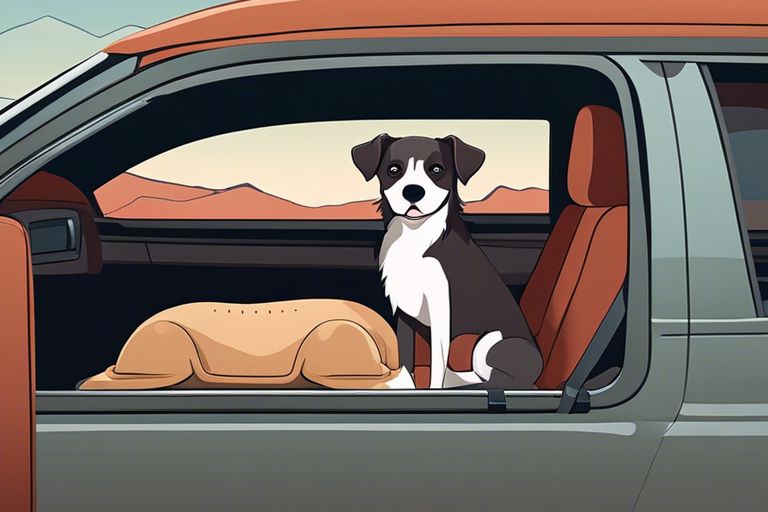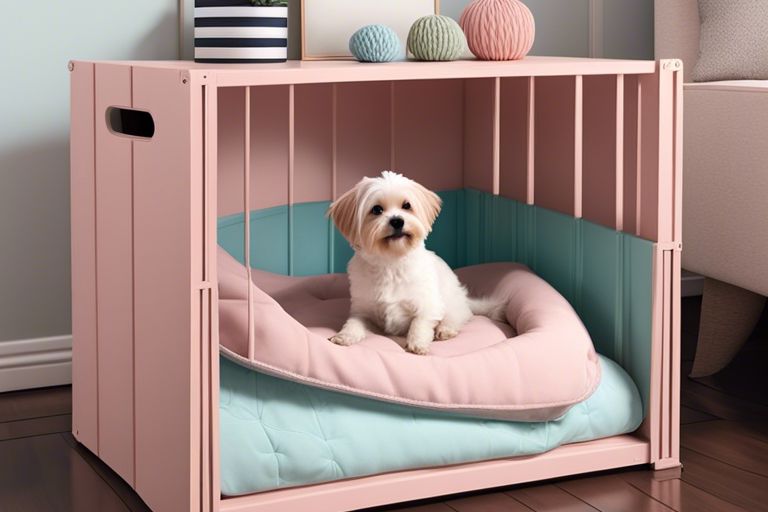Experiencing anxiety during car rides can be challenging for small dogs, but there are several strategies you can try to help alleviate their stress. First, it’s important to understand the root cause of your dog’s anxiety. Is it the motion of the car, the noise, or the unfamiliar environment? Once you have identified the triggers, you can begin to address them. Gradual exposure to the car in a positive and controlled manner can help desensitize your dog to the experience. Additionally, creating a comfortable and familiar space in the car, such as a cozy bed or blanket, can provide security for your dog. Lastly, incorporating positive reinforcement and rewards during car rides can help create a more positive association with the experience. With patience and consistency, you can help your small dog overcome their car anxiety and make travel more enjoyable for both of you.
Key Takeaways:
- Gradual Exposure: Introduce your small dog to the car in a gradual and positive manner to help them overcome their anxiety.
- Positive Reinforcement: Use treats, toys, and praise to create a positive association with the car and reduce your dog’s anxiety.
- Seek Professional Help: If your small dog’s car anxiety persists, consult a professional dog trainer or behaviorist for personalized guidance and support.
Identifying Signs of Car Anxiety in Small Dogs
Obviously, it’s essential to recognize the signs of car anxiety in your small dog before you can help them overcome their fear. According to Tips for Treating Car Ride Anxiety in your Dog, there are both behavioral and physical indicators to look out for.
Behavioral Indicators
One of the most common behavioral signs of car anxiety in small dogs is excessive panting, drooling, or shaking. Your dog may also become vocal, barking or whining more than usual, or exhibiting signs of restlessness such as pacing or trying to climb into your lap. Some dogs may even become aggressive or attempt to escape the car altogether. If you notice any of these behaviors in your small dog during car rides, it’s likely that they are struggling with car anxiety.
Physical Symptoms
In addition to behavioral indicators, there are also physical symptoms that can signal car anxiety in small dogs. These may include vomiting, diarrhea, or other signs of gastrointestinal distress. Your dog may also exhibit signs of fatigue or lethargy after a car ride, which can be a result of stress and anxiety. Keep an eye out for these physical symptoms, as they can indicate that your small dog is experiencing significant distress during car rides.
Preparing for the Journey
Clearly, preparing for a car journey with a small dog who experiences anxiety is crucial. By taking the time to adequately prepare, you can help alleviate your dog’s stress and make the journey more enjoyable for both of you.
Creating a Comfortable Space in the Car
When preparing for a car journey with a small dog who experiences anxiety, it’s important to create a comfortable space for them in the car. This can be achieved by using a secure and well-ventilated crate or carrier. Line the crate with familiar bedding or blankets to provide a sense of familiarity and comfort. It’s crucial to ensure that the crate is safely secured in the car to prevent any accidents or injuries. Additionally, consider covering the crate with a light sheet to create a den-like environment, which can help your dog feel more secure.
The Role of Familiar Objects and Scents
Another way to help your small dog with car anxiety is to bring familiar objects and scents along for the journey. Familiar toys or blankets can provide a sense of security and comfort for your dog, helping to reduce their anxiety. Additionally, introducing calming scents, such as lavender or chamomile, can have a soothing effect on your dog. You can use these scents in the car by using a diffuser or spray, or even by placing a few drops of essential oil on a cloth near your dog’s crate.
Training Techniques to Alleviate Anxiety
For small dogs struggling with car anxiety, there are several training techniques that can help alleviate their fear and discomfort. By using positive reinforcement, desensitization, and counter-conditioning, you can gradually help your dog feel calmer and more at ease during car rides.
Desensitization and Counter-Conditioning
Desensitization involves gradually exposing your dog to the trigger of their anxiety, in this case, the car, in a controlled and positive way. Start by simply sitting in the car with your dog, offering treats and praise to create a positive association. Then, gradually increase the exposure by starting the car engine without going anywhere, and eventually taking short drives around the block. By pairing these experiences with something your dog loves, such as treats or playtime, you can gradually change their emotional response to the car from fear to relaxation.
Positive Reinforcement and Reward-Based Training
Using positive reinforcement and reward-based training can also be highly effective in helping your small dog overcome car anxiety. Whenever your dog displays calm behavior in the car, reward them with verbal praise, treats, or toys. This will reinforce the positive behavior and help your dog associate the car with something enjoyable. Additionally, you can use a special toy or treat that is only given to your dog during car rides, creating a positive association with the experience.
 I am writing a blog post ‘How can I help my small dog with car anxiety?’.
I am writing a blog post ‘How can I help my small dog with car anxiety?’.
Professional Interventions and Medical Options
After trying various training techniques and home remedies, you may find that your small dog’s car anxiety persists. In such cases, it may be beneficial to seek professional interventions and consider medical options to help ease your pet’s distress. These interventions can range from consulting a veterinary behaviorist to exploring medications and supplements tailored to address anxiety and fear in dogs.
When to Consult a Veterinary Behaviorist
If you find that your small dog’s car anxiety is severe and significantly impacts their quality of life, it may be time to consult a veterinary behaviorist. These professionals specialize in addressing behavioral issues in animals and can provide a comprehensive evaluation of your dog’s anxiety triggers and symptoms. They can also create a customized behavior modification plan to help your dog overcome their car anxiety. Seeking the expertise of a veterinary behaviorist can be particularly crucial if your dog displays aggressive or self-injurious behaviors in response to car rides.
Medications and Supplements
When it comes to addressing car anxiety in small dogs, medications and supplements can play a role in alleviating their distress. Medications such as anti-anxiety drugs or sedatives may be prescribed by a veterinarian to help calm your dog’s nerves during car rides. Additionally, supplements like calming pheromones or nutritional aids can be beneficial in reducing anxiety levels in dogs. However, it is essential to consult with a veterinarian before starting any medication or supplement regimen for your small dog, as they can provide guidance on the most suitable options and dosages for your pet.
Conclusion
Hence, if you want to help your small dog with car anxiety, it’s important to start by creating positive associations with the car. This can be done by gradually introducing your dog to the car in small increments while using positive reinforcement, such as treats and praise. It’s also important to ensure that your dog feels secure and comfortable in the car by using a secure harness or carrier. Additionally, seeking the assistance of a professional dog trainer or behaviorist may be beneficial in helping your dog overcome their car anxiety. With patience and consistency, you can help your small dog feel more at ease when traveling in the car.
FAQ
Q: What are the signs that my small dog is experiencing car anxiety?
A: Signs of car anxiety in small dogs include excessive panting, whining, pacing, drooling, vomiting, or shaking. Your dog may also try to escape from the car or show signs of aggression. These symptoms typically occur before or during car rides.
Q: How can I help my small dog with car anxiety?
A: There are several strategies to help your small dog overcome car anxiety. Gradual desensitization to car rides, using a crate or car harness for safety and comfort, making the car a positive place with treats and toys, and creating a calming environment through music or pheromone products can all be effective methods. Consult with a professional dog trainer or behaviorist for personalized guidance.
Q: Can medication or supplements help with my small dog’s car anxiety?
A: In severe cases, medication or supplements prescribed by a veterinarian may be necessary to help alleviate your small dog’s car anxiety. These can include anti-anxiety medications, sedatives, or natural calming supplements. It’s important to work with a veterinarian to determine the most appropriate and safe option for your dog, as some medications can have side effects or interactions with other medications.


